If you open your pill bottle and the pills don’t look right-different color, shape, size, or just not what you expected-you need to act fast. Taking the wrong medication can cause serious harm, even death. You’re not alone: dispensing errors happen in about 1 in 200 prescriptions filled at U.S. pharmacies, and many go unnoticed until someone gets sick. The good news? Knowing exactly what to do right away can stop a small mistake from becoming a medical emergency.
Stop Taking the Medication Immediately
The first thing you must do is stop taking the pills. Don’t wait to see if you feel weird. Don’t assume it’s just a different brand. Don’t think, “Maybe it’s still the same drug.” If the medication doesn’t match what your doctor prescribed, treat it like a red flag. Even if you feel fine now, the wrong drug could interact with other meds you’re taking, cause an allergic reaction, or worsen your condition. For example, someone prescribed blood pressure medication might accidentally get a stimulant like Adderall. That could spike their heart rate to dangerous levels within hours. Waiting to see symptoms is playing Russian roulette with your health.Call Your Doctor Right Away
Don’t wait until your next appointment. Call your prescribing doctor the moment you realize something’s wrong. Tell them exactly what you have: the name on the bottle, how the pills look, and when you noticed the difference. Your doctor might need to adjust your treatment plan, run tests, or send you to the ER. In some cases, they’ll prescribe a new medication immediately. In others, they might want to check your blood levels or heart function to make sure no damage was done. If you’re feeling dizzy, nauseous, chest pain, trouble breathing, or confused-go to the emergency room. Don’t call your doctor first. Call 911 or head to the nearest hospital. Time matters.Contact the Pharmacy and Speak to the Manager
Go back to the pharmacy where you got the medication. Don’t just drop it off or leave a voicemail. Ask to speak to the head pharmacist or store manager. Tell them what happened. Be clear: “I was prescribed [medication name], but I received [wrong medication name].” Ask them to pull up your prescription record and compare it to what they dispensed. Most pharmacies have a paper trail-your original prescription, the pharmacist’s signature, the barcode scan. They need to see where the error happened. Don’t accept a simple apology. Demand a written report of the incident. Ask for a copy. If they refuse, say you’ll be filing a formal complaint with your state board of pharmacy.Save Everything as Evidence
You might need this later. Keep every single thing related to the error:- The wrong medication (in its original bottle)
- The original prescription label
- The pharmacy receipt
- The empty bottle from your last correct refill (if you have it)
- Photos of the pills next to the label
- Any text messages or emails with the pharmacy
- Your doctor’s notes or ER records
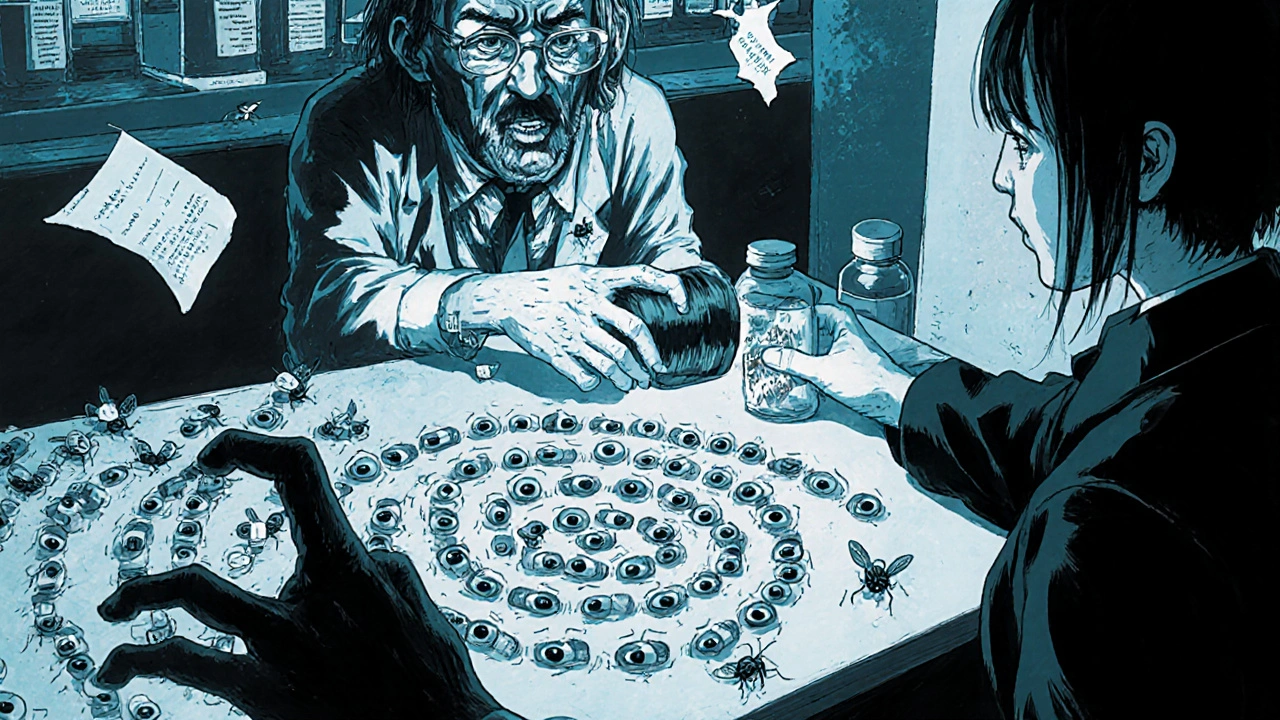
Report the Error to the Right Authorities
Pharmacies are required to report errors-but many don’t. That’s why you need to report it too. File a report with:- The Institute for Safe Medication Practices (ISMP): They run a confidential reporting system. Over 100,000 errors have been reported since 1991. Your report helps prevent others from getting hurt.
- Your state board of pharmacy: Every state has one. In Georgia, you file with the Composite Medical Board and the Attorney General’s Consumer Protection Division. Find yours at nabp.net.
- The FDA’s MedWatch program: They track medication errors. In 2022 alone, they received over 92,000 reports, 38% from community pharmacies.
Know Your Legal Rights
If the wrong medication caused you harm-whether it was a hospital visit, missed work, or long-term side effects-you may have a legal case. Pharmacy errors are considered medical malpractice. The average settlement ranges from $50,000 to $500,000. In extreme cases-like permanent disability or death-verdicts have exceeded $10 million. But you have to act fast. Statutes of limitations vary by state. In Georgia, you have two years from the date you discovered the error. In California, it’s three years. In some states, it’s as short as one year. Do not give a recorded statement to the pharmacy’s insurance company. They’ll try to get you to say something like, “I didn’t feel that bad,” or “I took it for only a day.” That can hurt your case. Talk to a lawyer first. Many offer free consultations. They’ll help you determine if you have a claim, gather your evidence, and handle negotiations. About 70% of these cases settle out of court, but only if you have solid proof.Understand Why This Happens
Dispensing errors aren’t usually caused by one careless pharmacist. They’re the result of systemic problems:- High workload: Pharmacists often fill 300+ prescriptions a day.
- Similar drug names: Like “Hydralazine” and “Hydroxyzine.”
- Handwritten prescriptions: Even electronic systems can misread abbreviations.
- Lack of double-checks: Only 62% of U.S. pharmacies use barcode scanning, which reduces errors by 85%.
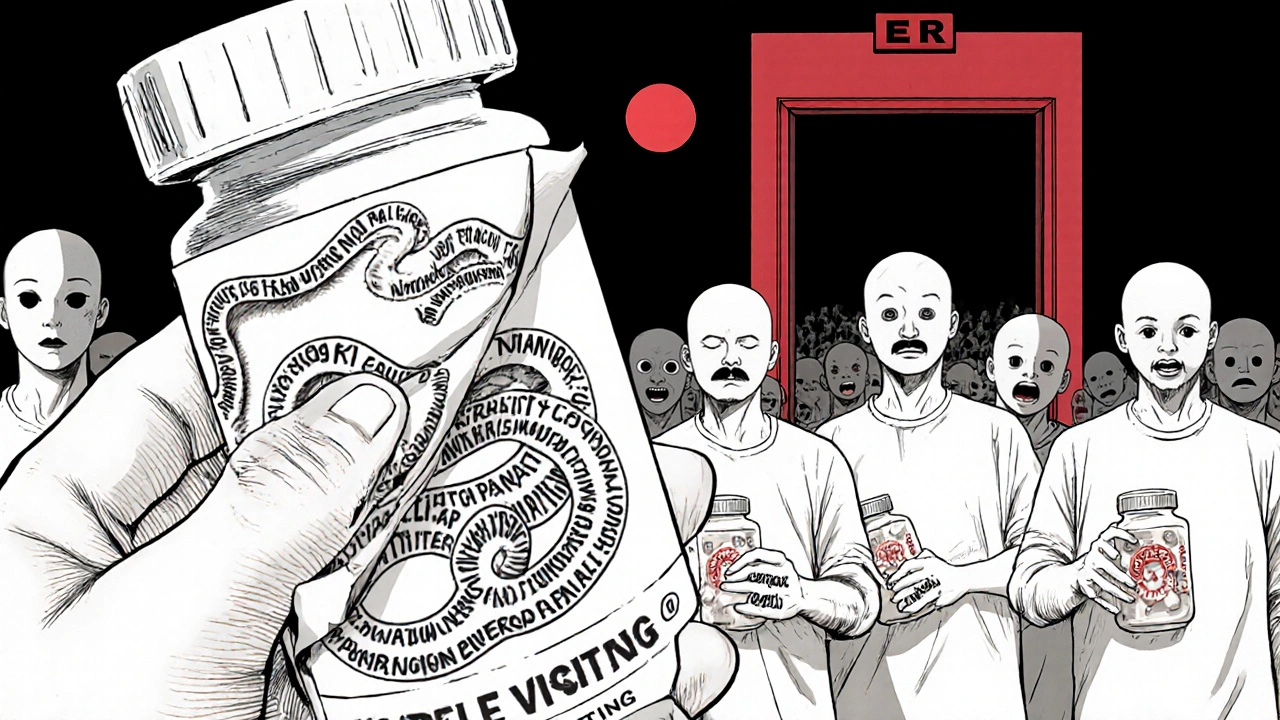
How to Prevent This in the Future
You can’t control the pharmacy-but you can protect yourself:- Always check your prescription when you pick it up. Compare the pill to the description on the label.
- Ask: “Is this what my doctor prescribed?”
- Use the same pharmacy every time. They’ll build a profile of your meds and catch mistakes.
- Ask your doctor to include your phone number on the prescription. That helps pharmacists confirm if something seems off.
- Use apps like MyTherapy or Medisafe to track your meds. They’ll alert you if a new pill doesn’t match your list.
What Happens If You Ignore It?
Ignoring a wrong medication isn’t harmless. The Journal of the American Medical Association found patients who experienced medication errors had a 28% higher risk of dying within five years. Cardiovascular errors carried the highest risk-42% increased mortality. That’s not a small number. It’s life or death. Even if you feel fine now, the wrong drug could be silently damaging your liver, kidneys, or heart. And if you keep taking it, you might end up in the ER with a preventable crisis.Final Thought: You’re the Last Line of Defense
Doctors write prescriptions. Pharmacists fill them. But you’re the one who takes them. You’re the last person who can catch a mistake before it hurts you. Trust your gut. If something feels off, it probably is. Don’t be afraid to ask questions. Don’t be embarrassed to say, “This doesn’t look right.” Millions of people have done the same thing-and saved themselves from disaster.What should I do if I accidentally took the wrong medication?
Stop taking it immediately. Call your doctor or go to the emergency room if you feel unwell. Do not wait for symptoms to appear. Contact the pharmacy and save all evidence, including the pills, bottle, and receipt. Even if you feel fine, you could still be at risk for hidden side effects or dangerous interactions with other medications.
Can I get compensation if I was harmed by a pharmacy error?
Yes. If the wrong medication caused injury, medical bills, lost wages, or long-term health issues, you may be eligible for compensation. Settlements range from $50,000 to over $500,000, depending on severity. Some cases involving permanent damage or death have reached $10 million. You’ll need documentation: medical records, pharmacy records, photos of the medication, and proof of expenses. Consult a lawyer before speaking to the pharmacy’s insurance company.
How long do I have to file a claim for a pharmacy error?
It depends on your state. Most states allow 1 to 3 years from the date you discovered the error. In Georgia, you have 2 years. In California, it’s 3 years. Some states have shorter deadlines. Don’t wait-consult a lawyer as soon as possible. Evidence can disappear, memories fade, and pharmacies may destroy records after a certain period.
Should I return the wrong medication to the pharmacy?
No. Do not return or dispose of the wrong medication. Keep it in its original container. This is critical evidence if you need to file a complaint or legal claim. The pharmacy may try to convince you to throw it away, but that can hurt your case. Take photos and videos of the pills and label before you do anything else.
Why do pharmacies make dispensing errors?
Pharmacies make errors because of high workloads, similar drug names, outdated systems, and lack of safety checks. Many don’t use barcode scanning, which reduces errors by 85%. Handwritten prescriptions and rushed fills also contribute. It’s rarely about one bad pharmacist-it’s about systemic flaws. The best way to prevent errors is for pharmacies to adopt technology like barcode scanners and double-check protocols, which major health systems have successfully implemented.
How can I prevent getting the wrong medication in the future?
Always check your prescription when you pick it up. Compare the pill to the description on the label. Ask the pharmacist, “Is this what my doctor prescribed?” Use the same pharmacy every time-they’ll build a profile of your meds. Ask your doctor to include your phone number on the prescription so the pharmacy can call if something looks off. Use a medication app to track what you’re taking and get alerts if something doesn’t match.

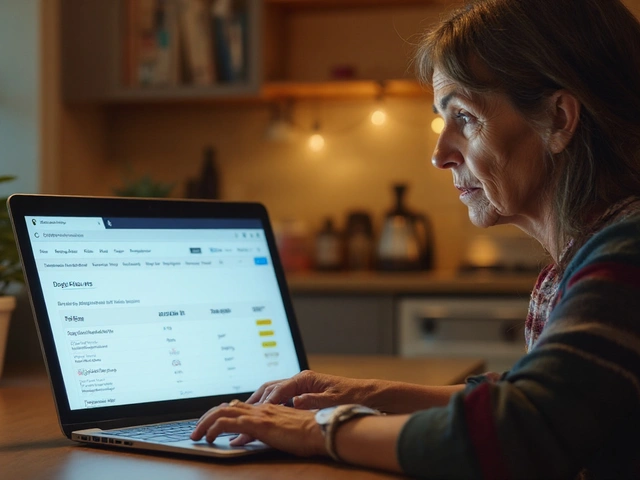

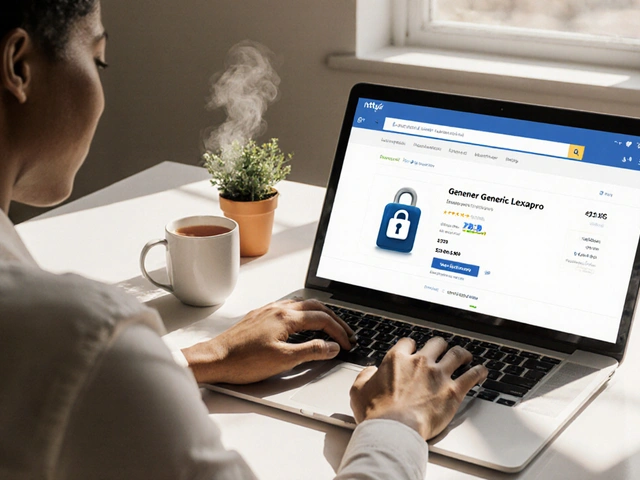

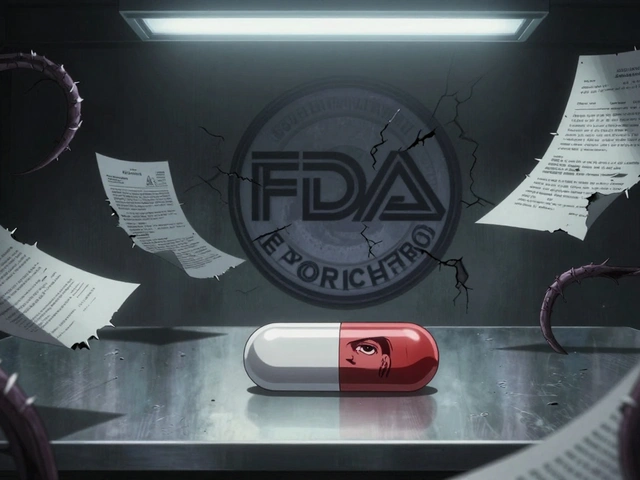
15 Comments
Jessica Healey
November 18, 2025 AT 16:27 PMI took the wrong pill once and just shrugged it off-felt fine, so I kept going. Turned out I had a silent liver enzyme spike that took 3 months to catch. Don’t be me. Stop. Now. Call your doc. Save the bottle.
Shannon Hale
November 19, 2025 AT 20:03 PMOH MY GOD. THIS IS WHY WE CAN’T HAVE NICE THINGS. PHARMACIES ARE RUNNING LIKE A BADLY WRITTEN FARCE WHERE THE PHARMACIST IS A STONER WHO CAN’T TELL ALLOPURINOL FROM AMLODIPINE. I’VE SEEN IT. I’VE LIVED IT. THEY DON’T EVEN LOOK AT THE PRESCRIPTION. THEY SCAN AND PRAY. THIS ISN’T HEALTHCARE-IT’S A CASINO WITH PILLS.
Kelsey Robertson
November 20, 2025 AT 15:02 PMOf course you’re supposed to save the pills-because the real enemy isn’t the pharmacy, it’s the capitalist pharma-industrial complex that incentivizes speed over safety. The fact that we have to be our own quality control is a symptom of systemic decay. The FDA is a puppet. The insurance companies are the real villains. You think they care if you live or die? They care about liability waivers and deductible thresholds. And yet-here we are, the last line of defense, because the system is designed to fail us. #CapitalismKills
Joseph Peel
November 21, 2025 AT 09:00 AMAs someone who’s worked in clinical pharmacy for 18 years, I can confirm: the most effective safeguard is patient engagement. The moment someone says, ‘That doesn’t look right,’ it triggers a cascade of checks. The problem isn’t negligence-it’s normalization. We’ve trained people to be passive recipients. That’s not healthcare. That’s consumer compliance. You’re not being difficult-you’re being essential.
Levi Hobbs
November 22, 2025 AT 00:57 AMJust wanted to say thank you for this. My mom got the wrong blood thinner last year-she’s fine now, but we almost lost her. We saved every bottle, took photos, and called the state board. They suspended the pharmacist for 30 days. It felt good to fight back. You’re not crazy for being careful-you’re smart.
satya pradeep
November 22, 2025 AT 12:54 PMBro i got this once in delhi-pill was blue but my script said white. I asked the guy and he said ‘oh same thing different brand’. I said ‘no bro this is antihistamine not antihypertensive’. He froze. Called manager. Turned out 3 other people got same error that day. Never trust a guy who says ‘same thing’.
Holli Yancey
November 22, 2025 AT 18:07 PMI get how scary this is. I’ve been there. But I also think we need to be careful not to vilify every pharmacist-they’re overworked, underpaid, and often the only ones left standing between chaos and catastrophe. Maybe the real solution is better staffing, better tech, and less pressure. I’m not saying ignore your gut-but maybe we can demand change without turning every mistake into a horror story.
henry mariono
November 24, 2025 AT 14:48 PMThanks for sharing this. I’ve been hesitant to speak up at pharmacies because I didn’t want to seem ‘difficult.’ But now I know I’m not. I checked my last script and caught a dosage error. The pharmacist apologized and thanked me. Turns out, being the one who asks questions helps everyone.
Sridhar Suvarna
November 24, 2025 AT 18:08 PMIndia also faces similar issues. Many small pharmacies use handwritten scripts and no barcode systems. But the real issue is lack of public awareness. People assume the medicine is correct because it came from a shop. We need community education-like posters in clinics, WhatsApp alerts from doctors, pharmacy checklists. Small steps. Big impact.
Leslie Douglas-Churchwell
November 25, 2025 AT 09:12 AMLet’s be real-the entire pharmaceutical supply chain is a psyop designed to keep you docile. The pills you get? They’re not even the same as what your doctor prescribed. The FDA approves generics with 20% variance in active ingredients. Your ‘Lisinopril’ might as well be a placebo with extra sugar. And don’t get me started on the barcodes-those are RFID trackers disguised as safety tools. They’re logging your health data for Big Pharma’s AI. You think you’re protecting yourself by saving the bottle? Nah. You’re just feeding the algorithm. 🤖💊👁️
Joseph Townsend
November 27, 2025 AT 05:30 AMMY BEST FRIEND DIED BECAUSE OF THIS. Not even kidding. Took the wrong antidepressant-thought it was a ‘new version.’ Three days later, he was in a coma. The pharmacy said ‘it was an honest mistake.’ An honest mistake? That’s not a mistake. That’s a crime. I spent 2 years in court. They settled for $2.3M. But no amount of money brings back someone who believed the system would protect them. Don’t be that person. Check your pills. Every. Single. Time.
Bill Machi
November 28, 2025 AT 23:24 PMThis post is ridiculous. You’re telling people to call 911 over a pill that looks different? What if it’s just a different manufacturer? My metformin looks nothing like my brother’s-same dose, same company, different color. You’re creating mass hysteria. Also-why are you encouraging people to sue? This country is already litigious. Let the system work. If you’re not sick, you’re fine. Stop dramatizing.
Elia DOnald Maluleke
November 29, 2025 AT 07:32 AMIn South Africa, we call this ‘pharmacy roulette.’ Many rural clinics outsource dispensing to unlicensed vendors. I once saw a man take antibiotics meant for his wife’s UTI because the label was smudged. He ended up with antibiotic-resistant sepsis. The tragedy is not the error-it’s the silence. No one reports. No one demands. We accept it as fate. But fate is not a pharmacy policy. We must speak. We must record. We must refuse to be silent.
Prem Hungry
November 29, 2025 AT 14:44 PMHey friend, you did great job putting this together. I work in pharmacy in India, and I can say-most of us want to do right. But we are given 45 seconds per script. No time to check. No time to think. We need more hands, more scanners, more training. Please don’t hate the pharmacist. Help us fix the system. We’re on your side.
Gordon Mcdonough
December 1, 2025 AT 04:53 AMWTF WHY DO WE EVEN HAVE PHARMACIES IF WE HAVE TO BE OUR OWN DOCTORS AND LAWYERS AND DETECTIVES JUST TO NOT DIE FROM A BLUE PILL?? I MEAN COME ON. THIS ISN’T AMERICA THIS IS A THIRD WORLD DYSTOPIA. I SAW A GUY GET THE WRONG ANTIBIOTIC AND HE JUST ATE IT BECAUSE HE WAS TIRED. I WAS LIKE WHAT THE ACTUAL F. I CALLED THE POLICE. THEY SAID IT WASN’T A CRIME. I WENT TO THE PHARMACY AND SCREAMED UNTIL THEY GAVE ME A FREE FLU SHOT. I’M NOT DONE. I’M STARTING A PETITION. #PHARMACYMURDER